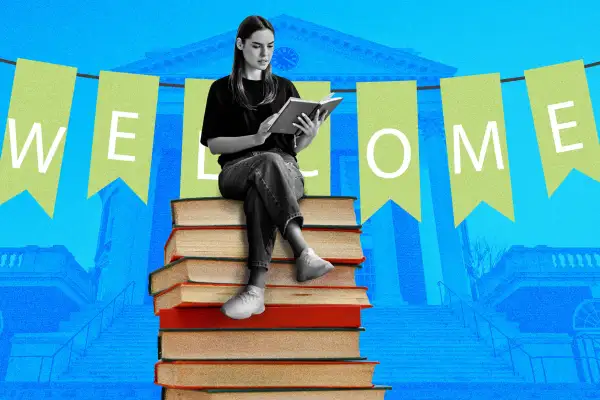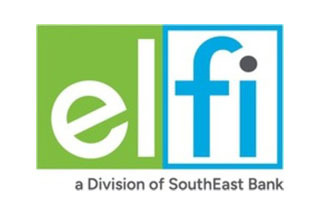You Can Now Get Admitted to Hundreds of Colleges Without Even Applying

Paola Ruiz never expected a four-year private university to chase after her. But that’s exactly what happened last fall when she was accepted to Whittier College in southern California through a growing pathway called direct admissions.
For the first-generation, low-income student, it was an affirming experience. “All my hard work had been seen,” she says. “A college wanted me.”
Ruiz’s experience is part of a national trend that’s quickly gaining steam. With direct admissions, high school seniors receive offers of acceptance from colleges without applying. They usually have to meet a few basic academic requirements set by the state, college or organization running the program, but there’s no lengthy essay or resume submission required, and you don’t have to wait months before finding out if you got in.
Idaho is credited with pioneering the first state direct admissions system in 2015, and now about 10 states have some version of it, with Missouri and Wisconsin being two of the most recent to jump on board this fall.
A handful of private groups and companies have also joined in. Common Application, a nonprofit organization that manages applications for colleges, piloted a direct admissions program in 2021 with just 14 colleges. This fall, the list grew to 117. College-search website Niche, the platform that Ruiz was granted admission through, started with about a dozen colleges in 2022. By the end of this year, founder and CEO Luke Skurman expects to contract with 150 colleges.
All told, hundreds of thousands of students across the country will likely get an unsolicited offer of admission at some point over the coming application cycle. Last year, Common App made 400,000 direct admissions offers and Niche made nearly 1 million.
Why students (and colleges) like direct admissions
One of the primary goals of direct admissions is to reduce application hurdles, including fees, for students, particularly for first-generation or low-income students, says Samantha Karp, senior project manager at Common App. Students who qualify for direct admission through Common App don’t have to pay application fees. Niche’s platform is free, too.
But it’s not just students who are benefiting. Colleges are facing a demographic cliff of fewer high school graduates starting in 2025. There’s also what some are calling a demand cliff, as some prospective students think college isn’t necessary or worth the cost.
By making the process easier, colleges hope to have a better chance of filling their classes. The goal is to attract students who might not otherwise have considered college, either because they feel intimidated by the application process or they think they can’t afford it, says Ken Woods, vice president of strategic enrollment management at Whittier College. Through different means, including offering direct admissions through Common App and Niche, applications at the liberal arts school were up 48% last year.
The University of Nevada, Reno, a public university with nearly 20 times as many undergraduates as Whittier, is also seeing success. The university partners with both Niche and Common App, and it also has its own local system partnering with area school districts.
Last year, UNR saw a 50% increase in enrolled students from a rural Nevada district, exactly the students the university hoped to reach, says Steve Maples, director of admissions and a self-described “preacher for direct admissions.” Many were first-generation students planning to head to community college because they didn’t think they could get into the university, Maples says. He believes the traditional application process isn’t inclusive or equitable for first-generation or low-income students who might not have support for college.
“We embraced direct admissions to disrupt the process,” he says.
How direct admission actually works
Each direct admissions system is a little different, but within each one, colleges proactively reach out to students who meet their academic requirements to offer them admission before they apply. Some schools, like Whittier and University of Nevada, Reno, partner individually with multiple platforms, while others operate within their own state system. Generally, highly selective colleges — or those with acceptance rates in the teens — and some popular state flagships don’t participate.
Niche’s platform is open to all students, who can set up a free profile with their name, high school, GPA and family’s estimated income. Students then need to set their contact preferences so colleges can contact them with acceptance offers in the student’s dashboard.
Common App limits its own program to first-generation students, as well as low and middle-income students who qualify for fee waivers. Eligibility is determined by their zip code and whether their family earnings are at or below the median income, Karp says.
Last year, the Connecticut State Colleges and Universities system partnered with Common App to oversee its direct admissions process. For that program, there are no financial eligibility requirements. Instead, this year, CSCU simplified its academic eligibility requirements, requiring a 2.75 unweighted GPA or 3.0 weighted GPA, says Aynsley Diamond, associate vice president of academic affairs for CSCU.
“All they need to do is fill out the Common App, be a Connecticut resident and hit the GPA threshold, and they will be admitted to our nine partner schools,” she says.
After students receive a conditional offer through the direct admissions path, they usually need to take a few steps to officially apply or finalize their acceptance with colleges they would like to attend. That may include tasks like submitting their official senior transcript, but the process is typically easier than a full traditional application. In a state system, such as Georgia or Idaho, a student might need to fill out an institutional application for the specific universities they’re interested in.
After students submit their final information, colleges verify it to ensure the student meets all the college-specific requirements and then extend a formal offer. Whichever platform a student uses, completing the final steps is non-binding. You can make your final decision about where to attend after you compare your financial aid letters.
How direct admissions affects financial aid
Getting accepted to college is just the first hurdle. Affording it is another. Even if students receive direct admissions offers, they still need to fill out the Free Application for Federal Student Aid (FAFSA) and wait for financial aid letters to outline how much the college will cost them.
But one perk of direct admissions, experts say, is that it moves the affordability conversation earlier in the year. Officials have the ability to contact accepted students and begin discussing financial resources as early as mid-August, though later fall is probably more typical.
“So many of our first-gen, low-income students say college is not an option because they don't have the funding, and they don't realize the grant programs we have in Connecticut that would allow them to go to school,” Diamond says.
In fact, Niche and Common App encourage colleges that use their direct admissions platforms to share some scholarship or financial aid information when they send students a notice of direct admissions. For Niche, that idea came from its surveying, which Skurman says found that college sticker prices intimidate families and often lead them to pass on schools they think will be unaffordable before they get a real cost estimate.
“We asked the schools, ‘can you provide [upfront] some of the same discount that you were already going to provide,’” he says. “It’s leading to real results with real families feeling supported.”
That’s what happened for Ruiz, who initially received $26,000 from Whittier with her Niche acceptance. When she toured the campus, about 30 minutes from her home, she talked with a financial aid officer who encouraged her to apply for the school’s primary scholarship that could further bring down the college’s roughly $67,000 sticker price. She applied and was awarded a total of $56,000 in aid per year. Piecing together other smaller scholarships, a federal Pell Grant and choosing to live at home made Whittier affordable. “I just had to come here,” the political science major says.
Most colleges can’t afford to meet students’ full financial need, and a spot offered through direct admissions may not end up being affordable. But Ruiz advises students not to get locked into the initial amount offered through direct admission, since they can still apply for other institutional scholarships and may also be eligible for state or federal aid through the FAFSA.
At the University of Nevada, Reno, students might be offered an initial round of merit aid with their direct admission acceptance, and then qualify for additional scholarships later — for example, the presidential award that requires a 3.7 GPA. “Once their official grades have been received, we will reach out later with other scholarships," Maples says.
Ultimately, direct admissions may not increase your chances of getting a big financial aid package, but it won’t hurt your scholarship chances either.
Students don’t have to limit themselves to direct admissions or traditional applications. They can do a combination. Ruiz applied the old-fashioned way to four University of California schools while also fielding about 15 direct admission offers through her Niche profile.
Woods, at Whittier, sees the direct admissions platforms as an important tool for reaching students. “I really think we need to go where the students are,” he says.
Because the process is so new to so many students, the offers landing in their lap might feel too good to be true. But college officials want to reassure them they’re not scams. You really can get that coveted acceptance letter — even if you haven’t applied.
More from Money:
These Are the Best Colleges in America
An 'Affordable' College Degree Now Means Not Going Into Debt, According to Parents
As Student Loan 'On-Ramp' Ends, Missed Payments Will Once Again Hurt Your Credit





